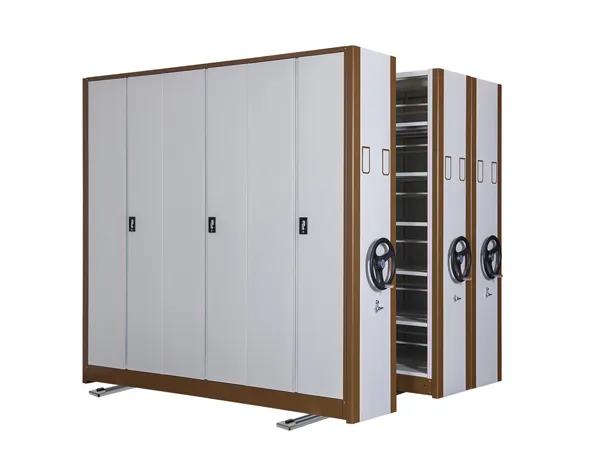How does a mobile archive storage systems work?
Mobile archive storage systems work by maximizing storage efficiency through a mechanism that allows shelving units to move, eliminating unnecessary aisles and optimizing space usage.
Mobile Archive Storage System Working Principle

Components of Mobile Archive Storage Systems
Shelving Units: These are the core storage components, where items are stored. The units can vary in size, type, and configuration, including flat shelves, drawers, or racks.
Tracks: The shelving units are mounted on tracks or rails installed on the floor. These tracks allow the units to slide back and forth, creating or closing aisles as needed.
Drive Mechanism:
Manual Operation: In a manually operated system, users move the shelving units by turning a hand crank or wheel. This mechanism engages gears that slide the unit along the tracks.
Powered Operation: In an electrically powered system, the units are moved using a push-button or digital control panel. These systems often come with features like motorized movement, soft stops, and safety sensors.
Safety Features: Modern mobile archive systems include safety features such as motion detectors, pressure-sensitive floor mats, and emergency stop buttons to prevent accidents or damage.
How It Works

Compact Storage:
The shelving units are typically kept closely together, with no fixed aisles between them. This compact arrangement significantly increases the storage capacity of a given area.
Creating an Aisle:
When access to a particular section of the storage system is needed, the user activates the mechanism (either manually or electronically) to move the units apart, creating an aisle where needed. This allows access to the stored items without taking up extra space.
…
For more detailed information about the working principle of the mobile archive storage systems, please click to visit: https://www.etegreen.com/en/a/news/mobile-archive-storage-system-working-principle.html


